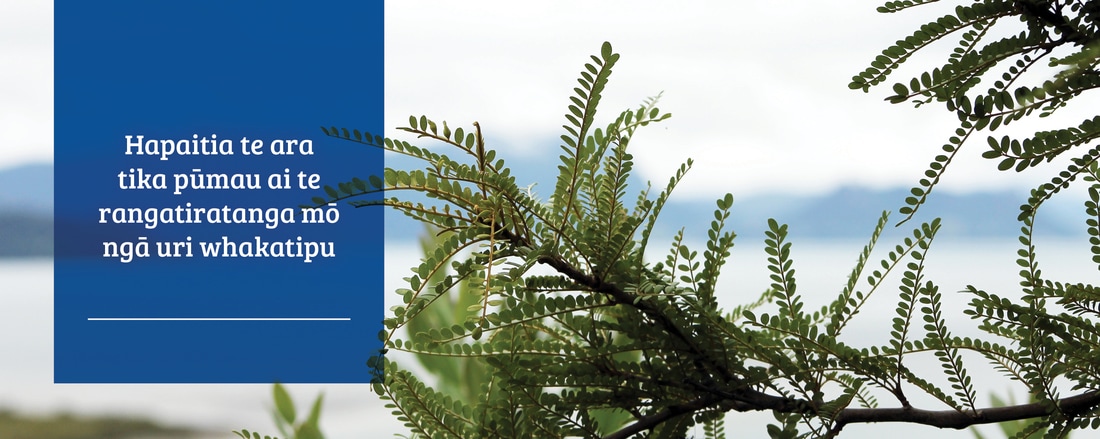With the urgent hearings completed in Wellington in December 2016 we are now waiting on the Waitangi Tribunal to complete its report on their findings and any recommendations. At this stage the Board anticipate that the Tribunal may issue a report on its finding during the first half of 2017.
In December 2016 the Board received a letter from the Crown setting out a work plan. It is anticipated that following the Tribunal’s report, the Crown and the Board will need to consider what the next steps will be in terms of any recommendations made by the Waitangi Tribunal. As a consequence the Crown has, at this stage scheduled:
- re-engaging with the Board in September 2017 to complete Terms of Negotiations by the end of 2017, and
- An Agreement in Principle by March 2019
In late December 2016 the Crown Forest Rental Trust (CFRT) who fund the bulk of work towards settlement have advised the Board that its approved client status and funding has been paused as a result of the Crown’s “de-prioritisation” and disengagement with the Board, until September 2017. This means there will be no funding available from CFRT to assist in completing research and other activities in the interim.
Overlapping Claims
Of great concern are other Iwi and Hapu who are ahead on the Crown’s work program that have recently moved ahead to ratify their settlements with their members – taking with them some redress options that might have otherwise been available to Ngatiwai for its settlement. These include:
1. Marutūahu (Iwi specific) Settlements
In October 2016 the Board received a letter from Minister Finlayson concerning his “preliminary decision” to provide redress on Aotea (Great Barrier Island) to Marutūahu Iwi including Ngati Maru, Ngati Tamatera, Ngāti Whanaunga and Te Patukirikiri. This was despite strong objection from the Ngatiwai Trust Board in light of the 1996 Maori Land Court decision.
2. Marutūahu (Collective) Settlement
During the Board’s discussion with the Crown on these matters, it became clear that the Crown had already made “final decisions” concerning collective redress offered to the Marutūahu Collective including redress on Aotea (Great Barrier Island). The Board opposed this decision and questioned the process which excluded Ngatiwai from these discussions. Despite the Board’s protest the Minister determined to proceed to finalise the Marutūahu Collective Settlement.
3. Ngati Rehua Ngatiwai ki Aotea Settlement
In late December 2016 the Ngati Rehua Ngati Wai ki Aotea Trust signed a Deed of Settlement with the Crown in Wellington. An eight week ratification and voting process followed that ended on 14 February 2017.
The Ngatiwai Trust Board had opposed the Trust’s settlement prior to the ratification process getting underway due to a number of outstanding concerns that it had raised with the Trust. Despite this the Trust ultimately decided to run the ratification process and we now await the result of the ratification vote.
4. Hako Treaty Settlement – Statement of Association
In late November 2016 the Board received a letter from the Crown concerning the Hako Treaty Settlement negotiations which includes a “statement of association” relating to a Pa site on Aotea (Great Barrier Island).
The Board opposed any redress offered to Hako on Aotea without any documented evidence to demonstrate why such redress has been offered by the Crown.
The Board is expected to engage with Hako to discuss this redress and provide a response to the Crown by 17 February 2017. However, the Board has not been able to secure a date for a meeting with the negotiators concerned.
5. Hauraki (Iwi specific) Settlements – Protocol Area Map
On 13 January 2017 the Board received a letter from the Crown concerning a “proposed protocol area map”. Included within the area on this map are Aotea (Great Barrier Island), Hauturu (little Barrier Island) and the Mokohinau Island Group. The area identified in the map sets out the area over which a “non-exclusive” protocol or relationship agreement will be established between the Hauraki Iwi and:
- the Ministry for Culture and Heritage in respect of decisions concerning “Taonga Tuturu[1]”, and
- Ministry for Primary Industries concerning a number of decision making roles.
The Hauraki Iwi included in this proposed protocol area are Hako, Ngai Tai ki Tamaki, Ngati Hei, Ngati Maru, Ngati Paoa, Ngati Porau ki Hauraki, Ngati Pukenga, Ngati Rahiri Tumutumu, Ngati Tamatera, Ngati Tara Tokanui, Ngāti Whanaunga and Te Patukirikiri.
The Board was expected to respond to this process by 31 January 2017 but have not been able to organise hui with the Iwi concerned.
6. Hauraki (Iwi specific) Settlements – Protocol Area for Fisheries RFR’s Applies
On 18 January 2017 the Board received a further letter from the Crown concerning the “proposed area” over which the Hauraki Collective “Fisheries Quota RFR[2]”applies.
This prompted a meeting with the Crown to express the Board’s frustration with processes and timeframes under which the Board is expected to act.
The Board is expected to engage with the Hauraki Iwi concerned in this collective and provide a written response to the Crown before 17 February 2017, however it has not been able to organise a hui with the Iwi concerned.
Where to from here?
With the urgent hearings, Christmas holidays and the Triennial Trustee elections almost out of the way, we propose to bring these and any other pressing matters to our Iwi for regular robust discussion.
Our next hui-a-iwi will be held on 4 March 2017, 8.30am at Otetao Marae, Whangaruru. We hope to see you all there to engage in open and productive discussions around these and other important Iwi matters.
[1] Taonga tūturu is one of 9 categories of protected New Zealand objects defined in the Protected Objects Act. The Act regulates the export of all categories of protected New Zealand objects but taonga tūturu is the only category of objects to have separate regulations regarding ownership and trade.
Taonga tūturu means an object that; (a) relates to Māori culture, history, or society; and (b) was, or appears to have been; (i) manufactured or modified in New Zealand by Māori; or (ii) brought into New Zealand by Māori; or (iii) used by Māori; and (c) is more than 50 years old Under the Act, all taonga tūturu found are in the first instance (prima facie) Crown owned to allow claims for ownership to be heard by the Māori Land Court. The Act also regulates the sale and purchase of taonga tūturu.
Taonga tūturu could include the following types of objects: Toki / Adze, Wakahuia, Kaheru / Wooden Spade, Kakahu / Cloak, Matau / fishhooks, Taiaha and patu, Carved firearms from the New Zealand Wars.
(Source: http://www.mch.govt.nz/nz-identity-heritage/protected-objects/taongatuturu)
[2] See page 12 at https://www.govt.nz/dmsdocument/6824.pdf[2] See page 15 ibid


